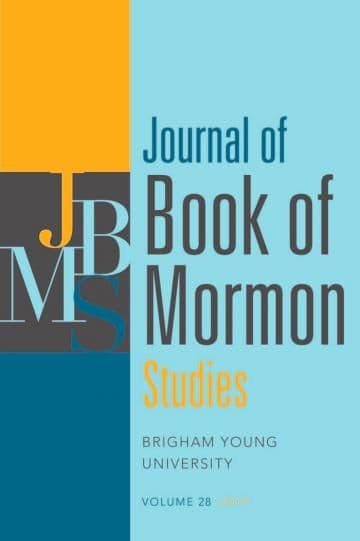Journal
Nephi and Goliath: A Case Study of Literary Allusion in the Book of Mormon

Title
Nephi and Goliath: A Case Study of Literary Allusion in the Book of Mormon
Publication Type
Journal Article
Year of Publication
2009
Authors
McGuire, Benjamin L. (Primary)
Journal
Journal of Book of Mormon Studies
Pagination
16-31
Volume
18
Issue
1
Abstract
When authors use the rhetorical device of literary allusion, they not only teach through their own words but also attach to their own text meanings and interpretations from the alluded text. This is true of Nephi’s allusion to the account of David and Goliath in Nephi’s own account of his killing Laban, which allusion is generally of a thematic nature. A few of the main thematic parallels between the two accounts are that both unbelieving Israel and Laman and Lemuel are fearful of the main antagonist, both David and Nephi prophesy the death of their opponent, and both Goliath and Laban have their heads cut off and armor stripped. The implications of this allusion run deep. At a time in which the right to kingship was continually in dispute between Nephi and Laman, Nephi casting himself as David—the archetypal king of Judah, whose faith led to his supplanting Saul—could be seen as legitimizing his regal authority over Laman.
Subject Keywords
Bibliographic Citation
Terms of use
Items in the BMC Archive are made publicly available for non-commercial, private use. Inclusion within the BMC Archive does not imply endorsement. Items do not represent the official views of The Church of Jesus Christ of Latter-day Saints or of Book of Mormon Central.